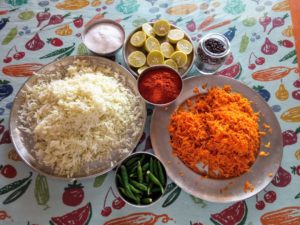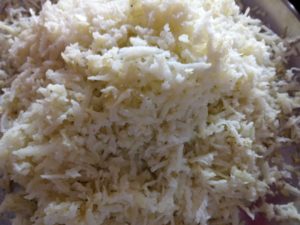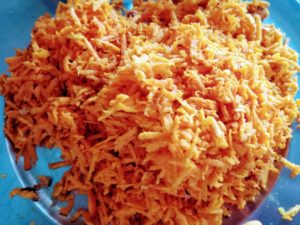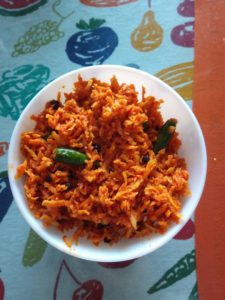An invariable ingredient in any Indian thali is pickle and also a chutney if you are from southern part of India. The history of pickles dates back to more than 5000 years.Coming to the war of pickles and chutneys which one is the best, to arrive at a conclusion let me walk through basic science behind the preservation methods of Indian pickles and the health benefits and loss in case of excess consumption.
Why were pickles made?
Historically we know that pickles were made to:
To preserve the seasonal fruits and vegetables in salt spice and oil
- This preserved food served as a substitute during summers when vegetables were not grown due to water scarcity
- This was an ideal substitute to fresh vegetables and was commonly used by travellers and sailors.
Scientifically pickle in small amounts has following health benefits:
It was used as an appetizer /starter for a meal even today in traditional south Indian meal, it stimulates the digestive juices and saliva and helps in good digestion of food.
- Traditionally made Indian pickles are made using coarse sea salt and though high on salt they are packed with probiotics.
- The bacteria in pickles helps in growing B vitamins, and create a healthy flora in the gut and aids in digestion. These also contain antioxidant and fat soluble vitamins.
- Spices used in making Indian pickles are currently the centre of attention under listed super foods for their health benefits (red peppers, black pepper, cinnamon, cloves, ginger ,garlic apart from cumin, mustard seeds,
- Oils typically used are again one most sought after oils under the healthy oils banners (mustard oil, gingelly /sesame oil) which coat the vegetables and prevent decay and retain its form intact.
What is the right method to make a pickle?
Well this is completely dependent on which part of the world you live in and what are the common sources of vegetables that are pickled and spices used. Vegetables used are Raw Mango, Lime, Amla/ Indian Goose berry, Tomato, Ginger, Garlic, Carrots, Cucumber, Cauliflower, Red and Green chillies, Raw/Green Tamarind etc.
In India there are several methods used, however I have listed the most common methods used:
1. Salt coating and sun drying the pickle to remove moisture from pickle and then adding oil, salt and spices, this is done where the moisture content is high and climate is hot and humid , i.e. in costal parts of the country.
2. While the other method is cutting the vegetables and adding spices and salt and leaving the jar for 3-4 days till all the spices and salt produce a good amount of water. This is preserved added oil preferably mustard oil in north and gingelly or sesame oil in south of India. This certainly leave a tangy, pungent and spicy flavour to the pickle and the shelf life varies from 1 to 2 years.
Which is the best pickle:
Amla pickle followed by lime pickle are considered the best. Especially in South India the first few morsels of rice are consumed with ghee and Amla /lime or mango pickle as it works like an appetizer and improves digestion.
Amla extracts protects liver functioning and prevents hepatotoxicity /liver damage. Regular consumption of Amla or Indian gooseberry pickles also help in reducing ulcers, if particularly, gastric ulcers that are caused by a weakening of mucous membrane and hyperacidity.
What is the Safe amount that can be consumed on a daily basis?
Despite all the benefits of pickles as it’s said anything in excess or exaggerated proportions can be a health hazard. We need also understand that our daily sally /Sodium requirement is not more than 5 /6 gm /day and if we consider that 2-3 serving of pickle is safe meaning you are adding 10-15 gm of additional salt apart from your required dose. High sodium intake can lead to water imbalance water retention, weight gain, hypertension and greater pressure on heart as a result. While it’s not just salt alone but since these pickles are high on oil as well we need be careful in amount of pickle that we consume. Ideally ½ teaspoon of pickle that can be divided into entire day’s meal can bring in great health benefits without affecting other physiological functions in the body. Also making pickles at home will lower the possibility of high salt, oil and too many preservatives that are added in readymade pickles available in the market.
Does this mean pickles are best to be consumed in limited option, then what is the best alternative to pickles?
With our current life styles and amount of preserved and ready to eat foods we consume we certainly double the intake of sodium compared to the daily allowance. Hence it’s ideal to make home based pickles if you cannot avoid and consumed it in limited amounts. However Chutneys which are made from freshly ground vegetables and seasonal fruits and vegetables can with a dash of powdered nuts and grams can be a great appetiser and act similar to pickle and enhance the taste of the meal. You can make a chutneys with a variety of vegetables (onion, tomato, gongura, coriander leaves, mint leaves, brinjal, ridge gourd, karonda, green chillies, ginger, garlic, coconut, , puffed Bengal gram, curry leaves, cucumber, green/raw mango, drum sticks, lime, green tamarind).
Don’t overcook the vegetable, ground the vegetable in as is form to a coarse paste with green chillies (chillies are mildly toasted green chillies with oil, cumin and asafoetida) a few teaspoons of sesame seeds, black gram, Bengal gram dal, or groundnuts can enhance the flavour of the chutney and makes it more palatable. If the vegetable is low on vitamin c few teaspoon of lime juice or tamarind pulp can make it more tangy and appetising. Tampering with a spoon of oil along with cumin, mustard seeds, coriander seeds, fenugreek seeds and asafoetida (or garlic if you don’t like asafoetida) and turmeric gives the chutney the pungent flavour that we usually relish while eating pickle.
Does this mean chutneys are best options compared to pickles?
I would say yes, on condition that you are not loading the chutney with salt like we make a pickle, not using too much oil for tampering, not over cooking the vegetables and boiling a few vegetables that might lead to loss of several water soluble vitamins and minerals.
Nutritionally how healthy is a chutney?
- Its Low on salt, unlike pickle
- Seasonal Vegetables are used as base to make chutney and are loaded with vitamins and minerals
- The chutneys are power packed with several antioxidants which are used in tampering as mentioned above.
- Compared to pickle its certainly high on protein content as well, its fortified with when nuts and grams
- Several super foods like green chillies, tomatoes, gourds and green leafy vegetables are part of regular chutneys.
In short chutneys can be power packed super foods, with a dose of vitamins, minerals and can be safely consumed during all meals of the day without any restriction. However the only disadvantage is has a low shelf life, a few can be stored under refrigeration for few weeks and a few for a day or two. But this is certainly the healthiest option if you can put in a little extra effort in making it in contrast to pickles.
book mark the blog for next few weeks for detailed recipes for chutneys!





